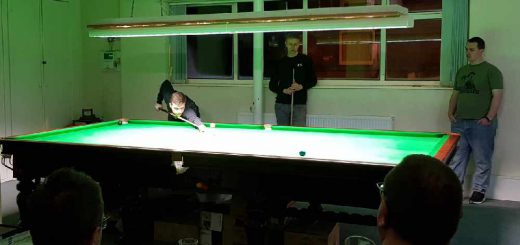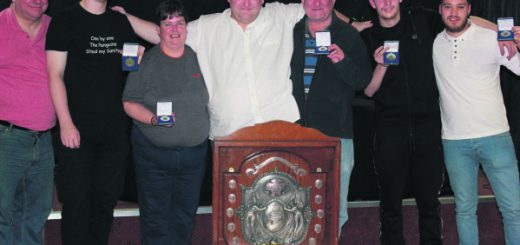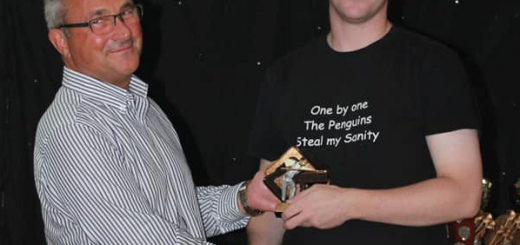History of the League
If you have no link with the above league, you may not know that we are looking to celebrate its centenary in the 2010/11 season and we are looking to do so ‘in style’.
During research, it came to light that the league was formed for friendly indoor sport during the winter months between men’s societies linked to religious and secular associations.
The Sunday School not only pioneered education in the nineteenth century to working class children but was part of the social scene Sunday schools were well structured, and the vast majority of children and their families were involved up to the 1960s as they formed the social life of the community. The children were organised into classes and their teachers were supervised by a body of superintendents. This was fine for the younger children, but what about those in their teenage years?
They normally joined as junior members of the Young Men’s Bible Class or Ladies’ Circle, listening to visiting speakers each Sunday expounding ideas from a Biblical text. From the Young Men’s Class sprang a secular arm: the Young Men’s Society, Institute, Guild or Club. They were designed to promote fellowship through sports such as football for autumn and cricket for summer. The indoor sports were usually table-tennis and billiards. Snooker was not chosen as it was thought to have an ‘upper edge’ to it, and was unsuitable for respectable Sunday school institutes. Likewise, whist was chosen over less suitable card games.
Sunday school football and cricket leagues evolved as did local Sunday School billiards and whist Leagues in Stalybridge and District, with each league being politically and administratively independent. Many such leagues formed, and some merged, as did Mossley with Stalybridge in the mid 1900s, as leagues struggled to keep members and teams from moving to better established and stronger ones.
The Stalybridge Snooker League kept the majority of its members until the start of World War Two, when teams were suspended for the duration, then lost, before gradually picking up again. Such leagues included the Stalybridge Orme League, Stalybridge and District League, Ashton Social League, and the Ashton and District League. Sadly, most have now folded including the Hyde and Salford leagues – although research has discovered that the Burnley and District Sunday School Snooker and Billiards League, formed in 1923, is still going strong.
Our league covered most of Tameside, and initially the first members were from Stalybridge, Mossley, Ashton and Dukinfield. Little has changed although now we have only seven teams. The original members were St John’s Dukinfield, St Peter’s, Hob Hill Congregational, the Social Centre, New St George’s, Holy Trinity, Christ Church, SHMD, and Booth Street [all Stalybridge]. Ashton Parish Church was the first league champion. Currently, only one of the original members remains in the league, albeit under a new name. Over the years, Dukinfield has been well represented with leagues from the Baptists, Moravians, Old Chapel and, more recently, Lime Street Club. Hyde has good representation: St Thomas’, Hyde PSA, and currently the Sportsman on Mottram Road, although they are now based at the Staley Vegas Snooker Club in Stalybridge.
The league played five billiards games a night with the highest aggregate being the winner. But, in the 1970s, things changed. Snooker became more popular, and the format changed to two single billiards, two single snooker matches and a final double game of snooker. Snooker was therefore added to the title, and that format remains to this day. Originally, games were played in church or Sunday School rooms but, since the 1950s, more comfortable venues, with bars, have been used such as Tameside District Police HQ in Ashton, community centres, public houses and social clubs [such as the Beaconsfield in Ashton].
The matches used to stop at 9:30pm with tea and biscuits offered by the home team. The most famous teamaker was Jack at Hob Hill. Sometimes a short prayer was offered.
The league currently starts around September or October with the George Fletcher Memorial Trophy and The Gordon Clay Memorial Trophy finals between the league champions and the winners of the Berry or Taylor Cup, and ends around May or June the following year with a presentation night. Matches are played in a friendly, competitive manner, making Thursday evenings very enjoyable. Since the league began, we estimate that we have between 40 and 50 clubs in the league which highlights its strength, as it has survived by long term memberships.
Our current members are St Georges and St Peters in Stalybridge and Mossley A & B. We have also had some very good snooker and billiards players in our ranks: one of them celebrated 50 years as a member of the league.
The research has revealed some very interesting details, but we are always on the look-out for more information: data such as photographs, press cuttings or
journal entries would all be added to our website.
Ian Hopton
Press Secretary
Email: ian.snooker@fsmail.net



